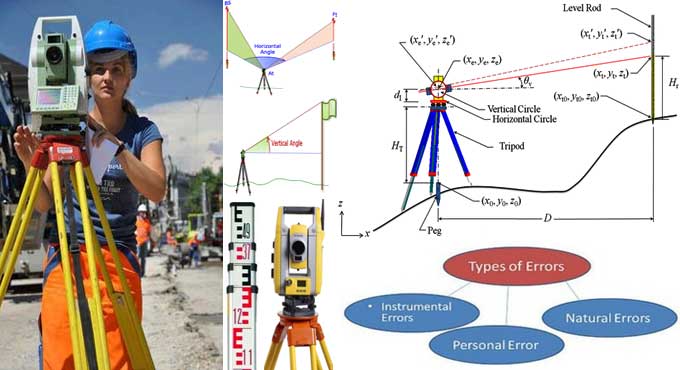NEWS | SOFTWARE | SHEET
The 8 Shocking Sources of Errors in Surveying Measurements - Are Your Results Accurate?
Surveying is the process of measuring and mapping the features of a particular area. It is a crucial component in construction, mapping, and land use management. Lots of surveyors in the construction field are using surveying as a roadmap for any kind of building construction.
However, as with any measurement process, surveying is prone to errors. There are various sources of errors in surveying, some of which can be significant, and impact the accuracy of the final survey results.
Human Error
One of the most common sources of error in surveying is human error.
This can occur in the form of incorrect measurements or incorrect recordings of data. It can also occur when surveyors make mistakes in their calculations or misinterpret the data they have collected.
Equipment Error
Another source of error in surveying is the equipment used. For example, the accuracy of the equipment can be impacted by factors such as wear and tear, maintenance, and environmental conditions. For example, if the equipment is not calibrated properly, or if the batteries are low, the readings can be inaccurate.
Natural Factors
Natural factors such as weather, atmospheric conditions, and solar radiation can also impact the accuracy of survey measurements. For example, during a hot day, the temperature can cause the air to expand and cause a reading to be higher than it actually is.
Topographical Factors
The topographical factors of the land being surveyed can also cause errors in measurement. For example, if the terrain is uneven, or if there are obstacles such as trees or buildings in the way, the surveyors may have to adjust their equipment and measurements to account for these factors.
Measurement Technique
The technique used for measurement can also impact the accuracy of the survey results. For example, if the surveyor is using an outdated or inaccurate method, the results can be significantly impacted in the construction.
Refraction
Refraction is another source of error in surveying. It occurs when light travels through different media with different refractive indices. This can cause the light to bend and result in incorrect measurements.
Leveling Errors
Leveling errors can also impact the accuracy of surveying measurements. This can occur if the surveyors are not using the correct leveling method, or if the equipment is not set up correctly.
Magnetic Disturbance
Magnetic disturbance is another source of error in surveying. This can occur if the surveyors are working in areas with high levels of magnetic interference. For example, if they are working near power lines or other sources of electromagnetism, the readings can be impacted.
How to Solve Surveying Error in Construction?
To mitigate these sources of error in surveying, it is important to use the right equipment and techniques. This can include using high quality, well maintained equipment, as well as training surveyors in the correct methods and techniques for measuring and recording data.
Additionally, it is important to understand the factors that can impact the accuracy of the survey results and to take steps to correct or compensate for them.
To get more details, go through the following video tutorial.
Lecturer: APSEd
In conclusion, while errors in surveying are common, they can have a significant impact on the accuracy of the final survey results. By understanding the sources of these errors and taking steps to mitigate them, surveyors can ensure that their measurements are accurate and reliable.


